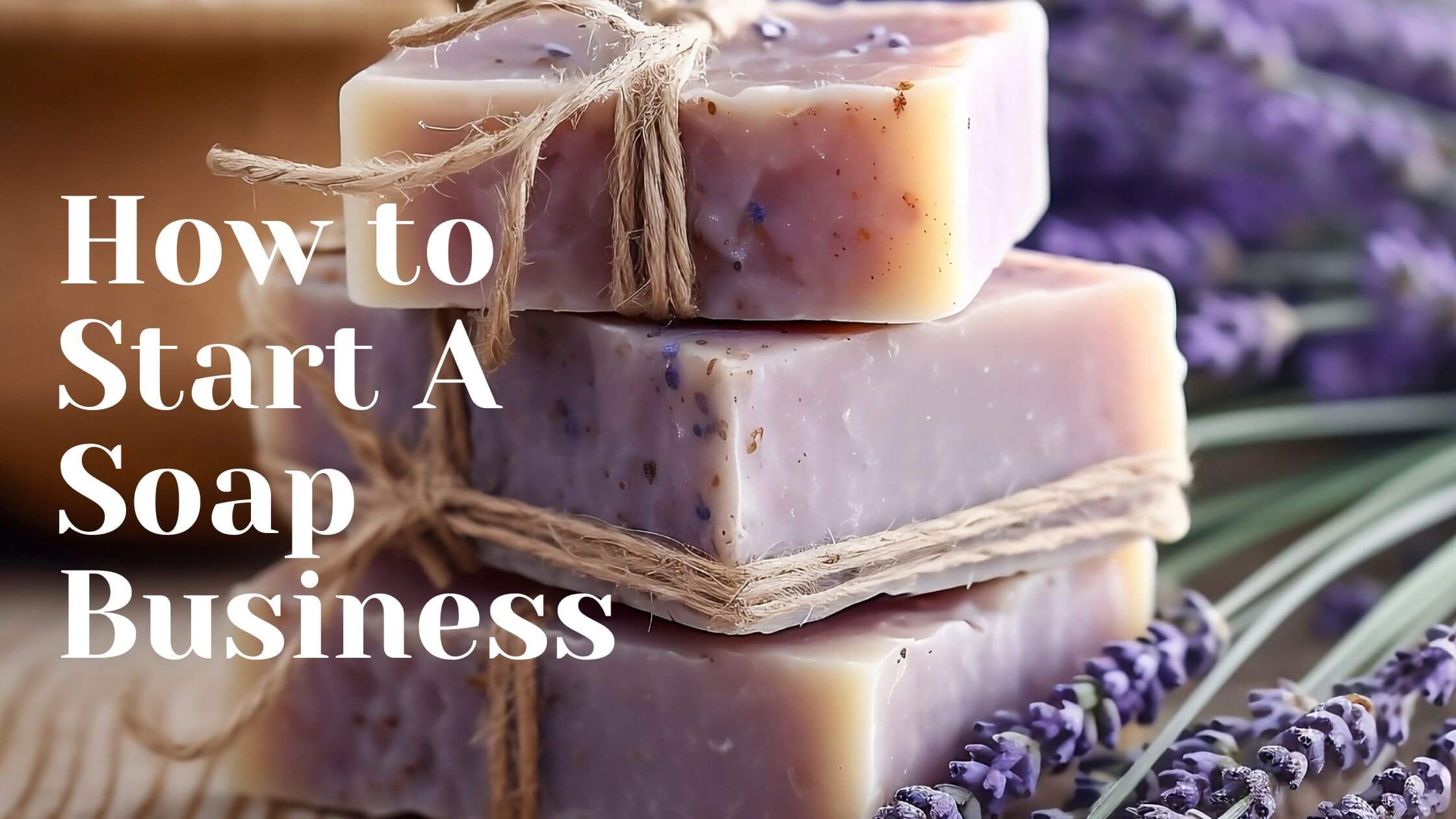If your yarn stash keeps growing, and every crochet hook feels like an extension of your hand, it might be time to turn that passion into a business! With handmade and unique items more popular than ever, there’s a growing market for well-crafted crochet creations. Starting a crochet business isn’t just about profit—it’s about sharing your artistry, connecting with people who appreciate handmade goods, and building something of your own.
Plus, it’s a great way to make your hobby work for you! In this guide, we’ll walk you through every step of launching a crochet business, from finding your niche to setting up a shop. Get ready to crochet your way to success!
Crochet Your Way to Business Success: Start A Successful Crochet Business
Dive into the world of crochet and turn your passion into profit! This guide covers everything from setting up shop to attracting your first customers, offering practical steps to transform your craft into a thriving business. Get ready to create, sell, and succeed—one stitch at a time!
Stitch 1: Setting Up Your Business Basics
To build a successful crochet business, start with a strong foundation.
Find A “Easy To Remember” Name
Begin by choosing a memorable name that captures the essence of your creations and resonates with your ideal customers. A unique, catchy name will make your brand easier to find and remember, especially in an online market full of craft businesses. Once you’ve chosen a name, design a logo that visually represents your brand—something that’s visually appealing and reflects your unique style in crochet.

Conduct A Business Plan
Next, create a simple yet effective business plan. Outline your goals: what products you’ll sell, who your target customers are, and the general direction you want your business to go. In this plan, set both short-term (within 6-12 months) and long-term (1-3 years) goals. Maybe you’ll start with a few types of items, like hats or home décor, and expand as you gain a following. This plan will keep you focused and allow you to measure your success as you go.
Register The Business
Register your business according to your location’s requirements to make it official, and check for any necessary licenses if you plan to sell at local markets or shops. Setting up these basics properly will not only get you organized but will also help you avoid complications as your business grows.
Stitch 2: Finding Your Niche: What Makes Your Crochet Unique?
The crochet world is vast, and finding a niche will help your business stand out in a crowded marketplace. Start by considering popular product categories like clothing, accessories, or home décor, but look for ways to add your own unique twist. For example, if you love making scarves, consider specializing in eco-friendly, plant-dyed yarns or focusing on intricate patterns that appeal to a high-end audience. You could also consider seasonal items, such as Christmas ornaments or summer beach bags, to keep your product line fresh and exciting.
It’s helpful to conduct a bit of market research here. Spend time browsing platforms like Etsy or Pinterest, and note what types of crochet items are popular and where there might be gaps in the market. For example, if pet accessories are trending, you might create a line of crochet dog sweaters. Aim to create products that reflect your unique style while meeting a demand in the market. This niche approach doesn’t limit you; instead, it allows you to focus on something specific that your audience will come to associate with your brand.
Stitch 3: Sourcing Quality Materials and Tools
Quality is key to standing out in the crochet business, so invest time in finding the best materials and tools. Start by choosing yarns that are both visually appealing and durable. For example, merino wool is popular for its softness and strength, while cotton is versatile and ideal for everything from home items to baby products.
Depending on your niche, look for specialty yarns that add a unique touch, such as hand-dyed or sustainable options. Aim to source from reputable suppliers to ensure consistent quality in your creations, as this will build trust and loyalty with customers.

Once you know the materials you need, think about sourcing in bulk to lower costs. For example, if you’re making blankets, buying larger quantities of high-quality yarn will save money in the long run. Building relationships with suppliers can also help; they may offer discounts or notify you of new products that suit your style.
High-quality crochet hooks and tools are equally important. Look for ergonomic options that prevent strain on your hands, especially if you’ll be crocheting frequently. Many crocheters find that metal hooks offer durability, while bamboo hooks provide a gentler touch.
Additionally, consider adding personalized tags or labels to your finished items. These add a professional touch, and customers love the personal connection to the maker. Once you’ve assembled your materials and tools, you’ll be ready to start creating products that customers will be excited to purchase and show off!
Stitch 4: Pricing Your Products for Profit
Pricing handmade crochet items can be tricky, as it requires balancing fair compensation for your time and materials with a price customers are willing to pay.
To start, calculate the cost of materials for each item. For example, if you’re making a blanket, add up the yarn cost, any embellishments, and even packaging if you’re shipping the product. Next, determine how much time you spend making each item, and assign an hourly rate that values your effort—many new crochet business owners start around $15-20 per hour, but this can vary based on your skill level and market.
After factoring in materials and time, research similar items in the market. Look at other handmade items on platforms like Etsy, Amazon Handmade, or local markets, and pay attention to the price range. Try to position your price within that range or higher if your products have unique qualities or higher-quality materials. Add a small buffer for profit to allow reinvestment into your business, such as marketing or new tools.
Also, consider pricing custom orders differently—these often require more time, communication, and adjustments to fit the customer’s preferences, so be sure to set a price that reflects the added work. Ultimately, aim to create a pricing structure that makes sense for both your business goals and your customers’ expectations.
Stitch 5: Building an Online Presence
In today’s digital world, building a strong online presence is essential for any crochet business. Start by setting up a professional website or an Etsy shop where customers can browse your work, learn about your brand, and make purchases. Invest in high-quality photos of your products—use good lighting, a clean background, and even staged settings to showcase your creations in a way that attracts potential buyers. On your website, include an “About” section that shares your story, as people love to support businesses with a personal touch, especially in the handmade market.
Next, take advantage of social media platforms. Instagram is a great choice for visually-driven businesses like Crochet, as you can share photos and videos of your creations, works-in-progress, and even tutorials to engage followers. Posting regularly and using popular hashtags like #crochetbusiness, #handmadewithlove, or #crochetersofinstagram will help more people discover your work. Pinterest can also drive significant traffic to your site; create boards that showcase your products and link back to your online store or website.

Joining online crochet communities is another way to build a following. Participate in groups on Facebook, Reddit, or other forums where crochet enthusiasts gather to share advice and showcase work. This not only helps spread the word about your business but also allows you to connect with others who may become supporters and customers.
Consistency is key—update your social media profiles regularly and interact with followers by responding to comments, holding giveaways, or sharing behind-the-scenes looks at your crochet process. A strong online presence can build credibility and keep your business in the spotlight.
Stitch 6: Marketing and Selling Your Crochet Creations
Once your online presence is set, it’s time to start actively marketing your crochet business. Begin with simple yet effective strategies, such as creating a brand story that resonates with customers. Share why you started your business, the passion behind your products, and the craftsmanship that goes into each piece. This personal touch sets you apart from mass-produced items and builds a connection with potential buyers who appreciate handmade goods.
Consider selling your products on multiple platforms to reach a broader audience. Beyond your website or Etsy, explore local craft fairs, farmers’ markets, and even partnerships with local boutiques that support small businesses. These venues allow customers to see and feel your products firsthand, which can lead to higher sales and valuable feedback. When selling online, offer promotional discounts for new customers or holidays. Special offers like “Buy One, Get One Half-Off” or “Free Shipping on Orders Over $50” can boost sales and encourage larger purchases.
Collaborations with other small businesses or influencers in the crafting world can also expand your reach. For instance, a crochet influencer might review your products or showcase a giveaway on their Instagram, helping you gain followers who love crochet. Lastly, use email marketing to keep your customers updated on new products, special sales, and seasonal launches.
A monthly or bi-monthly newsletter with styling tips, product updates, or exclusive discounts can keep your business top-of-mind for returning customers. Marketing takes consistent effort, but with a mix of creativity and strategic planning, you can build an enthusiastic customer base for your crochet business.
Stitch 7: Handling Orders and Customer Service
As your crochet business gains momentum, managing orders and delivering top-notch customer service becomes essential. Start by creating a system to track orders efficiently—this could be as simple as a spreadsheet or as advanced as order management software, depending on your volume. For each order, note the item, customization requests, due dates, and shipping details. Being organized here will prevent delays and ensure a smooth production process, allowing you to meet deadlines without compromising quality.
Next, think about packaging. Since you’re selling handmade products, consider adding a personal touch, such as thank-you notes, eco-friendly packaging, or even a small, branded label on your items. Packaging is the first thing customers see, so it’s an opportunity to make a memorable impression that reflects the care you put into your craft. If you’re shipping items, select reliable shipping carriers and consider providing tracking options so customers feel secure about their purchase’s arrival. Shipping costs can be tricky; many businesses either include them in the product price or offer a flat rate to make it simple for customers.

Finally, prioritize customer service. Aim to respond to inquiries quickly and professionally, whether it’s a question about a product, a customization request, or feedback after receiving an item. Setting up an FAQ page on your website can help answer common questions, like how long orders take to ship, care instructions for crochet items, and customization options. Handling customer concerns effectively and with empathy builds loyalty and can even turn a one-time buyer into a returning customer. Additionally, asking for reviews after each transaction not only provides helpful feedback for you but also encourages satisfied customers to share their positive experiences with others.
Stitch 8: Scaling Up: Expanding Your Crochet Business
Once you’ve built a steady flow of orders and are comfortable with your current workload, it might be time to think about scaling your crochet business. Start by assessing areas where you can increase efficiency, such as streamlining production by using time-saving tools or organizing materials for quicker access. For example, if certain items are consistently popular, consider preparing them in batches to reduce time spent on individual orders. This batching process can be particularly useful during peak sales seasons, like holidays or colder months, when cozy crochet items are in high demand.
If demand becomes more than you can handle alone, consider outsourcing parts of the production process. This could involve hiring a fellow crochet artist to help with stitching or outsourcing administrative tasks like managing social media or handling order fulfillment. Expanding your team allows you to focus on the creative aspects while ensuring that all other areas of the business are running smoothly.

Another way to scale is by expanding your product line. Take note of customer feedback and requests—are people asking for matching accessories with a popular item or requesting certain colors or sizes? Introducing complementary products can increase the average order value and keep customers interested. You could also consider creating seasonal or limited-edition products to drive excitement and encourage repeat purchases. Additionally, expanding into new sales channels, such as wholesale to local boutiques or launching new online marketplaces, can increase your reach. As you scale, continue to focus on quality and customer satisfaction, as these will be key to sustaining your growth.
Stitch 9: Overcoming Common Challenges in the Crochet Business
As with any business, running a crochet business comes with its own set of challenges. Time management is often the first hurdle, as crocheting is a time-intensive craft. Start by setting a schedule that balances production with other business tasks, such as marketing, inventory management, and customer communication. Prioritize orders based on deadlines and set realistic production timelines to avoid overcommitting. Using a planner or productivity tool can help you keep track of orders, social media posts, and personal deadlines without feeling overwhelmed.
Seasonal demand can also pose a challenge, as the popularity of crochet items often peaks in colder months or around holidays. Plan ahead for these busy times by preparing inventory in advance or having extra help ready if needed. During slower months, use the time to develop new products, improve your skills, or focus on marketing. Offering “off-season” products, like summer hats or lightweight bags, can also help smooth out seasonal fluctuations in sales.
Burnout is another challenge, especially for creatives running a one-person business. Avoiding burnout requires balancing work and rest, even if it means turning down orders during particularly busy times. Take breaks to recharge your creativity, and try not to lose sight of the joy in your craft. Staying inspired is key to a thriving crochet business, so seek out fresh ideas, experiment with new techniques, and connect with other makers to maintain your enthusiasm. Facing these challenges with a proactive approach will help you navigate the ups and downs of running a crochet business, ensuring that it remains both profitable and enjoyable for the long run.
Start Crocheting Your Way to Success!
Building a crochet business is a journey of creativity, patience, and passion. From crafting beautiful pieces and connecting with customers to overcoming challenges and scaling your efforts, every step is a chance to grow and learn. Remember, there’s no perfect formula—each business is as unique as the artist behind it, and your authenticity is your greatest asset. Celebrate your progress, even the small milestones, and don’t be afraid to experiment and find what works best for you.
Starting a crochet business lets you share your talent with the world while doing what you love. With a clear plan, dedication, and a little inspiration, you’re well on your way to crocheting your way to success. Now, grab that yarn and hook—your crochet business awaits!







